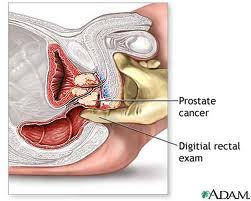Men whose index fingers are longer than their ring, or fourth, fingers run a significantly lower risk of prostate cancer, according to a study published Wednesday in the British Journal of Cancer.
The chances of developing the disease drop by a third, and even more in younger men, the study found.
"Our results show that relative finger length could be used as a simple test for prostate cancer risk, particularly in men aged under 60," said Ros Eeles, a professor at the Institute of Cancer Research in Britain and co-author of the study.
Finger pattern could help identify which men should undergo regular screening, especially in combination with genetic testing or other risk factors such as a family history of the disease, she said.
From 1994 to 2009, Eeles and colleagues questioned more than 1,500 prostate cancer patients in Britain, along with 3,000 healthy control cases.
For more than half the men, the index was shorter than the ring finger. Compared to this group, men whose index and ring fingers were the same length -- 19 percent of the cohort -- had a similar prostate cancer risk.
But when the index finger was longer, the risk of developing the disease dropped by 33 percent.
Men under 60 were 87 percent less likely to be in the cancer group.
The relative length of the two fingers in question -- set before birth -- appears to be a marker of different levels of sex hormones to which a baby is exposed in the womb, with less testosterone correlating with a longer index finger.
Earlier research has shown that testosterone promotes the growth of prostate cancer.
Underlying the unexpected connection between digits and cancer are two genes, HOXA and HOXD, that control both finger length and the development of sex organs.
Other studies have found a link between exposure to hormones before birth and the development of other diseases, including breast cancer and osteoarthritis.
The chances of developing the disease drop by a third, and even more in younger men, the study found.
"Our results show that relative finger length could be used as a simple test for prostate cancer risk, particularly in men aged under 60," said Ros Eeles, a professor at the Institute of Cancer Research in Britain and co-author of the study.
Finger pattern could help identify which men should undergo regular screening, especially in combination with genetic testing or other risk factors such as a family history of the disease, she said.
From 1994 to 2009, Eeles and colleagues questioned more than 1,500 prostate cancer patients in Britain, along with 3,000 healthy control cases.
For more than half the men, the index was shorter than the ring finger. Compared to this group, men whose index and ring fingers were the same length -- 19 percent of the cohort -- had a similar prostate cancer risk.
But when the index finger was longer, the risk of developing the disease dropped by 33 percent.
Men under 60 were 87 percent less likely to be in the cancer group.
The relative length of the two fingers in question -- set before birth -- appears to be a marker of different levels of sex hormones to which a baby is exposed in the womb, with less testosterone correlating with a longer index finger.
Earlier research has shown that testosterone promotes the growth of prostate cancer.
Underlying the unexpected connection between digits and cancer are two genes, HOXA and HOXD, that control both finger length and the development of sex organs.
Other studies have found a link between exposure to hormones before birth and the development of other diseases, including breast cancer and osteoarthritis.


No comments:
Post a Comment